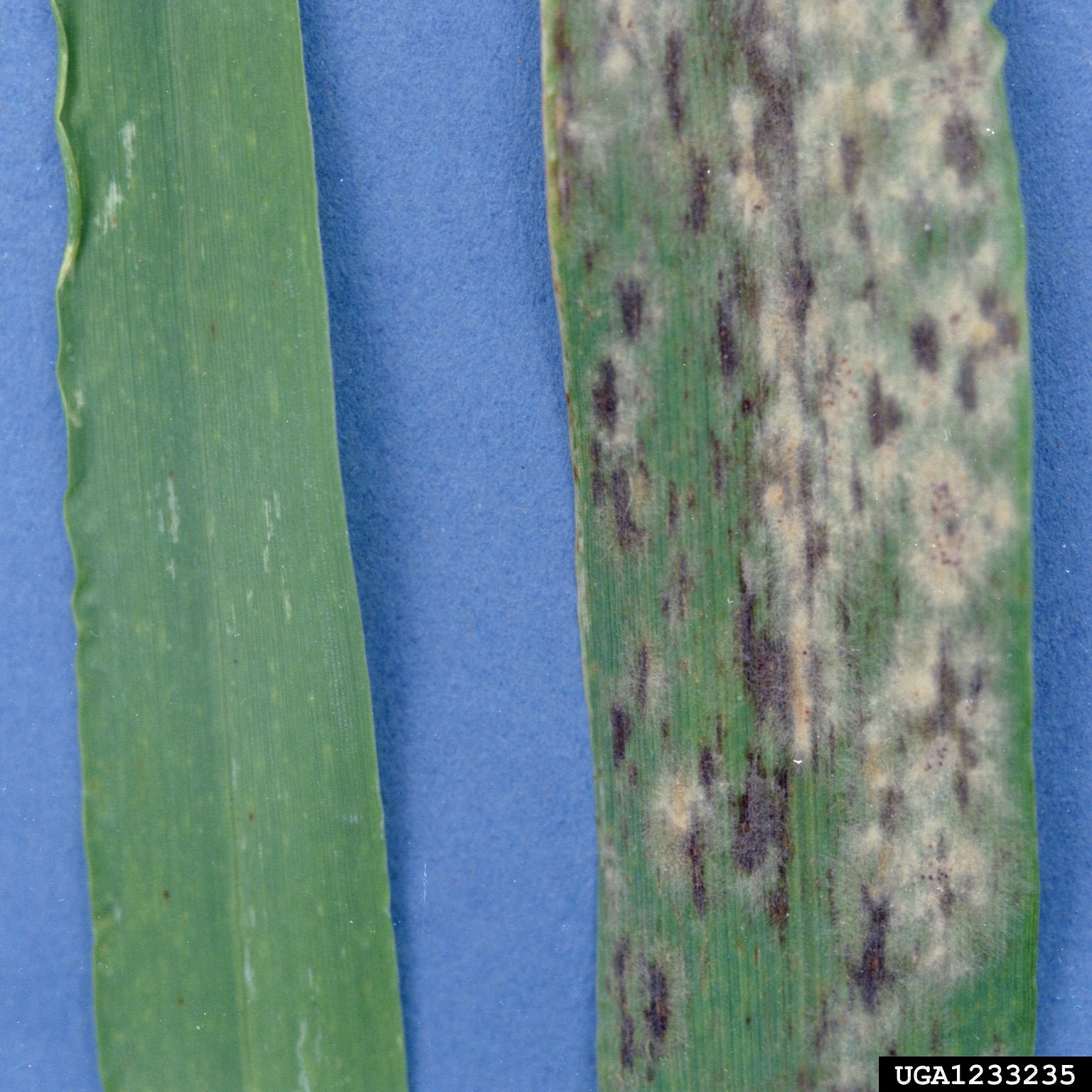Barley Powdery Mildew Control: How To Treat Barley Powdery Mildew


You don’t have to be a plant expert to recognize powdery mildew on barley. The barley leaves are sprinkled with white fungal spores that resemble powder. Ultimately, the foliage yellows and dies. If you grow barley in your home garden, it’s important to learn to recognize the symptoms of barley with powdery mildew. Read on for more information on powdery mildew, as well as tips on barley powdery mildew control.
Powdery Mildew on Barley
Powdery mildew on barley is a fungal disease. You can recognize it by looking for fluffy white patches on the leaf surface of your barley plants. These spots get grayer as they mature. Barley with powdery mildew can appear as small, isolated areas of white. The disease can also cover the entire leaf surface as fungal spores germinate and infect the leaf. When you see powdery mildew on barley, remember that the spores are using up the nutrients the plant requires to grow, reducing photosynthesis. This means that barley with powdery mildew won’t have much vigor and may stop growing entirely. The barley leaves can also die prematurely.
Treating Barley Powdery Mildew
If you are wondering how to treat barley powdery mildew, unfortunately, it is not easily done. There is no magic wand to cure the problem and treating barley powdery mildew is difficult in a home garden. While it is possible to buy foliar fungicides that provide some barley powdery mildew barley control, this is expensive. You also have to apply it at least twice and sometimes even more often. Instead of treating barley powdery mildew, experts recommend managing the disease with good cultural practices. Perhaps most important is to select a barley cultivar carefully, planting only those that are resistant to powdery mildew. In addition to planting resistant cultivars, you can take other steps to prevent this disease from attacking your barley crop. Since barley that is planted early has a higher risk for infection, it’s a good idea to plant later rather than earlier. Crop rotation, good garden clean-up, and keeping down nearby weeds can also help prevent the overwintering of spores. It will also help if you don’t plant barley in dense stands or fertilize with high amounts of fertilizer.
Sign up for the Gardening Know How newsletter today and receive a free copy of our e-book "How to Grow Delicious Tomatoes".

Teo Spengler is a master gardener and a docent at the San Francisco Botanical Garden, where she hosts public tours. She has studied horticulture and written about nature, trees, plants, and gardening for more than two decades, following a career as an attorney and legal writer. Her extended family includes some 30 houseplants and hundreds of outdoor plants, including 250 trees, which are her main passion. Spengler currently splits her life between San Francisco and the French Basque Country, though she was raised in Alaska, giving her experience of gardening in a range of climates.